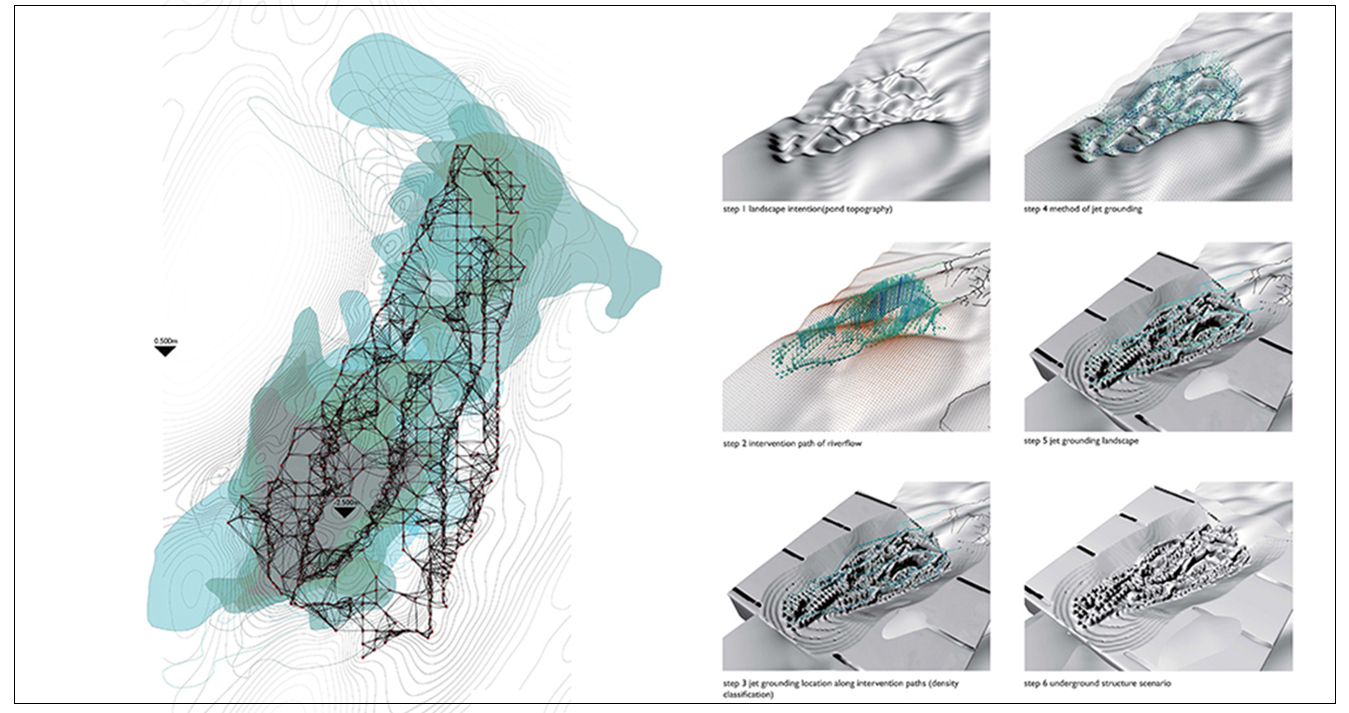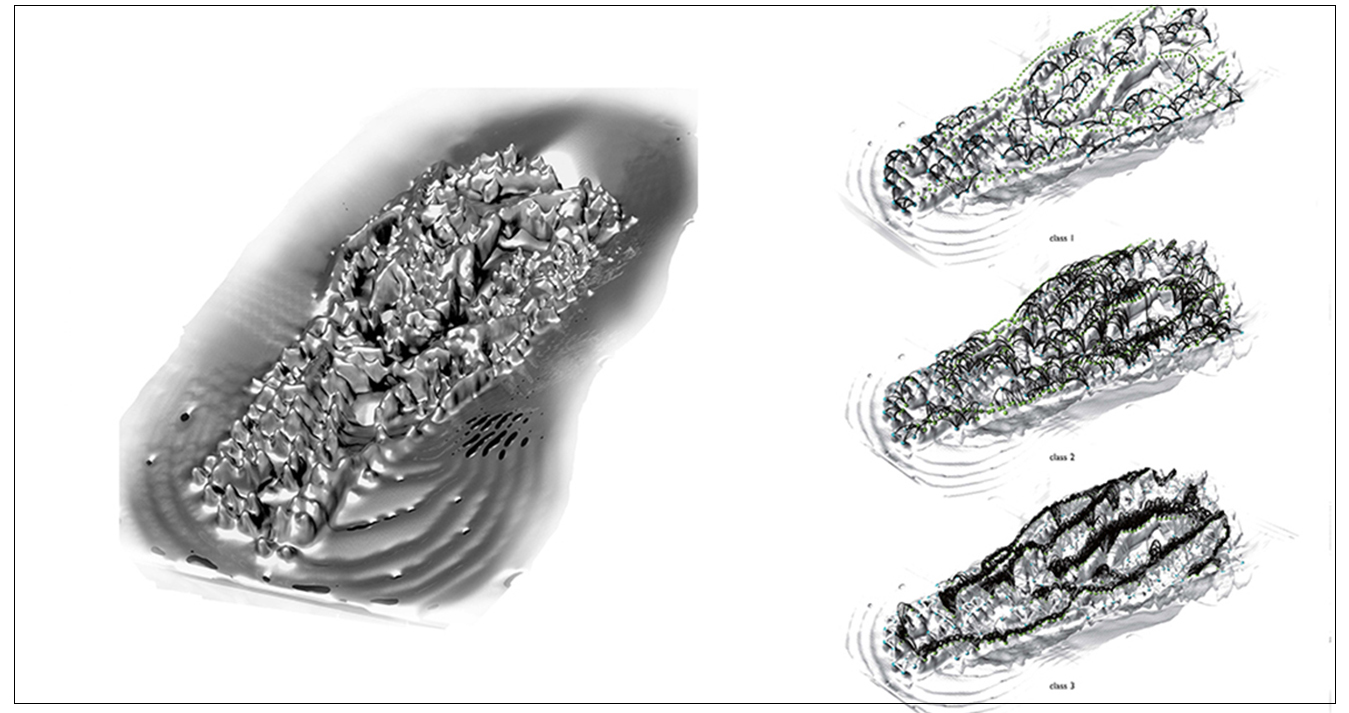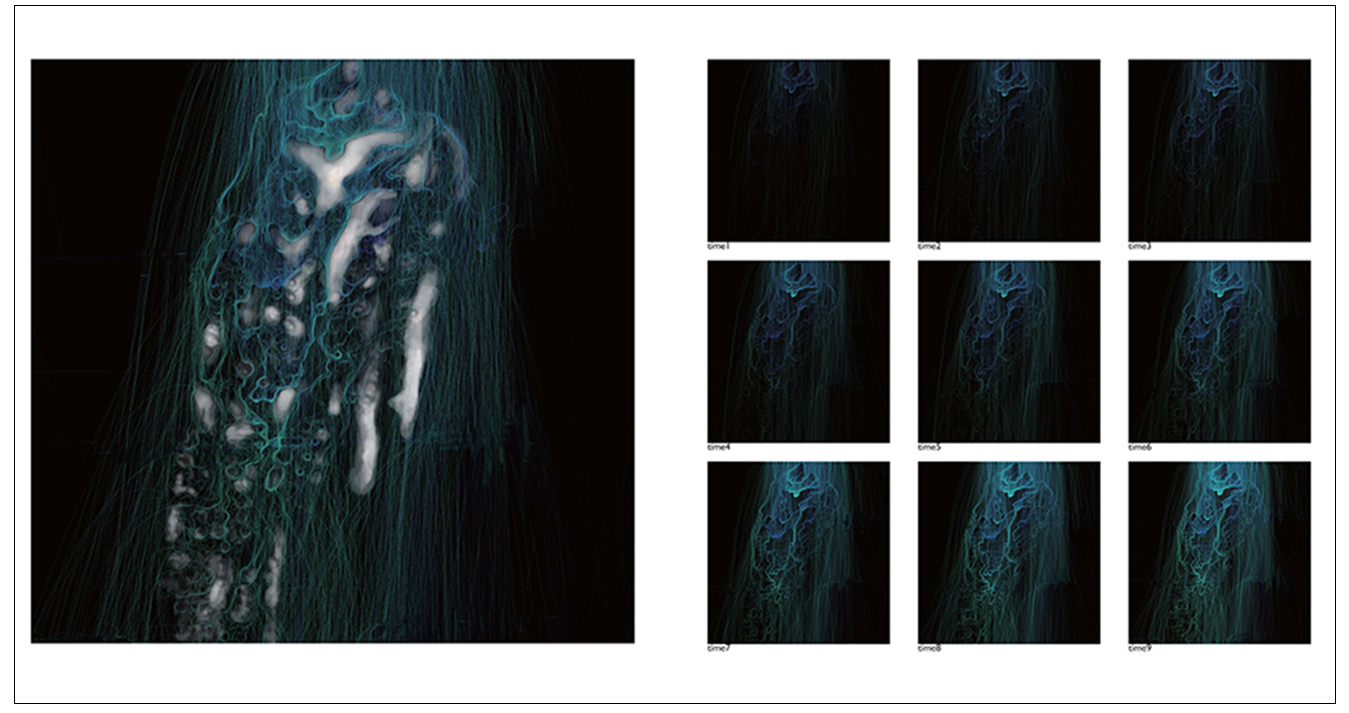
Urban S.A.L.T
The functioning of cities involves a complex structure of systems that encourages their development and growth. This notion leads us to consider the relationships between these systems – social, economic, political, and natural – as actors that shape the urban form. This complexity of systems in contemporary cities have made designers ponder on the traditional, static, and imposed solutions found in urban design.
The site of the project, Al Ain, is also a place made up of diverse systems of particular human and non-human actors. This city has always been influenced by hydrological and geomorphological processes due to its close-proximity to the Al Hajar Oman Mountains. However, the water that comes from the mountains is not sufficient nowadays to meet the high demand of the increasing farmlands, which have had to embrace the uncontrolled governmental policies of agricultural production growth. Consequently, the salinization of the soil and salt-crust formations in many farms, due to irrigation with highly saline underground water, has become an evident problem of the city.
This proposal attempts to consider the geomor-phologicalfeatures of the site creating slight modifications in the surface to redirect and harvest water in certain specific areas. Our main intention is focused on the generation of two different conditions in Al Ain; we name this tactic polarization of a mix of completely salt-affected areas with non-saline ones. This process of polarization will be effected using a Relational Urban Model, allowing human and non-human actors with their collective protocols and interactions to form an extended participatory system that will produce positive spatial and social implications for the city. The idea of implementing a system where all parts can have benefits, has led us to mobilise the strategy of a policy of buying permit which is relevant to balance the economic profits of the proprietors of both, salt-affected areas and non-saline plots.
- [year] 2015
- [Credits] Yichao Wan. Fei Tong, Zhuoran Xie, Qianxin Deng, Luiao Xu, Israel Luna Mino
- [Design Tutors] Enriqueta Llabres Valls, Zachary Flucker
- [H+T Tutor] Nuria Alvarez
Urban S.A.L.T
The functioning of cities involves a complex structure of systems that encourages their development and growth. This notion leads us to consider the relationships between these systems – social, economic, political, and natural – as actors that shape the urban form. This complexity of systems in contemporary cities have made designers ponder on the traditional, static, and imposed solutions found in urban design.
The site of the project, Al Ain, is also a place made up of diverse systems of particular human and non-human actors. This city has always been influenced by hydrological and geomorphological processes due to its close-proximity to the Al Hajar Oman Mountains. However, the water that comes from the mountains is not sufficient nowadays to meet the high demand of the increasing farmlands, which have had to embrace the uncontrolled governmental policies of agricultural production growth. Consequently, the salinization of the soil and salt-crust formations in many farms, due to irrigation with highly saline underground water, has become an evident problem of the city.
This proposal attempts to consider the geomor-phologicalfeatures of the site creating slight modifications in the surface to redirect and harvest water in certain specific areas. Our main intention is focused on the generation of two different conditions in Al Ain; we name this tactic polarization of a mix of completely salt-affected areas with non-saline ones. This process of polarization will be effected using a Relational Urban Model, allowing human and non-human actors with their collective protocols and interactions to form an extended participatory system that will produce positive spatial and social implications for the city. The idea of implementing a system where all parts can have benefits, has led us to mobilise the strategy of a policy of buying permit which is relevant to balance the economic profits of the proprietors of both, salt-affected areas and non-saline plots.











